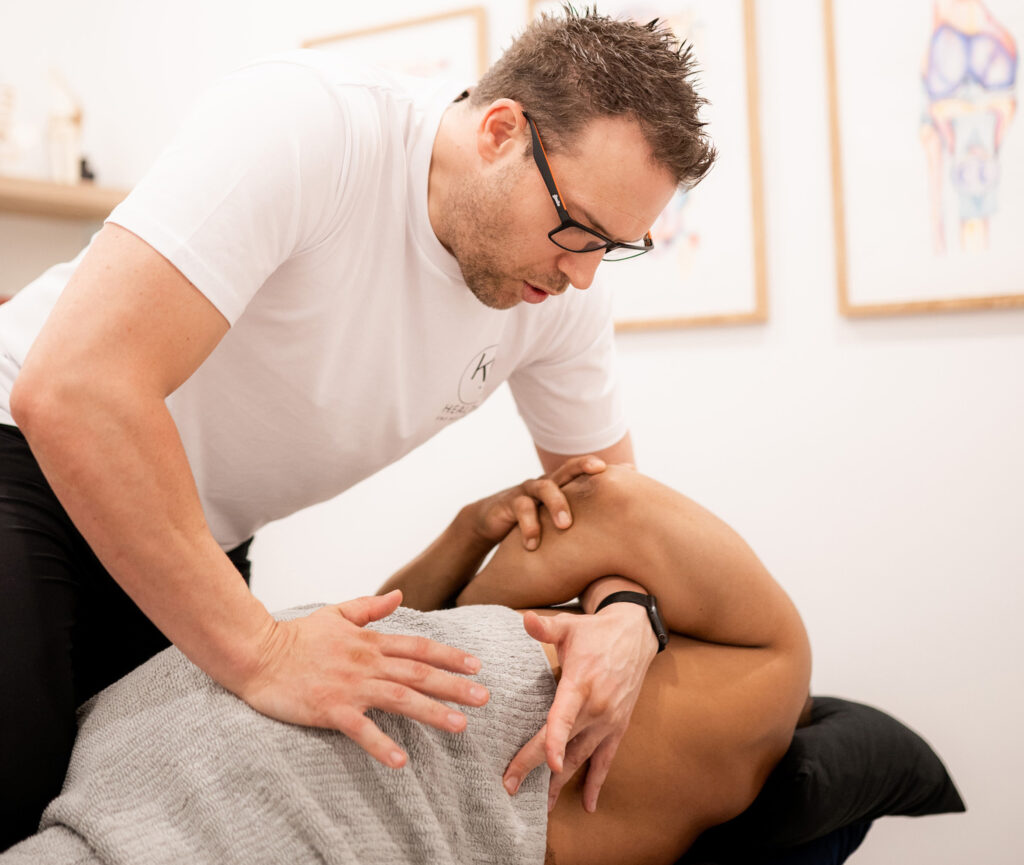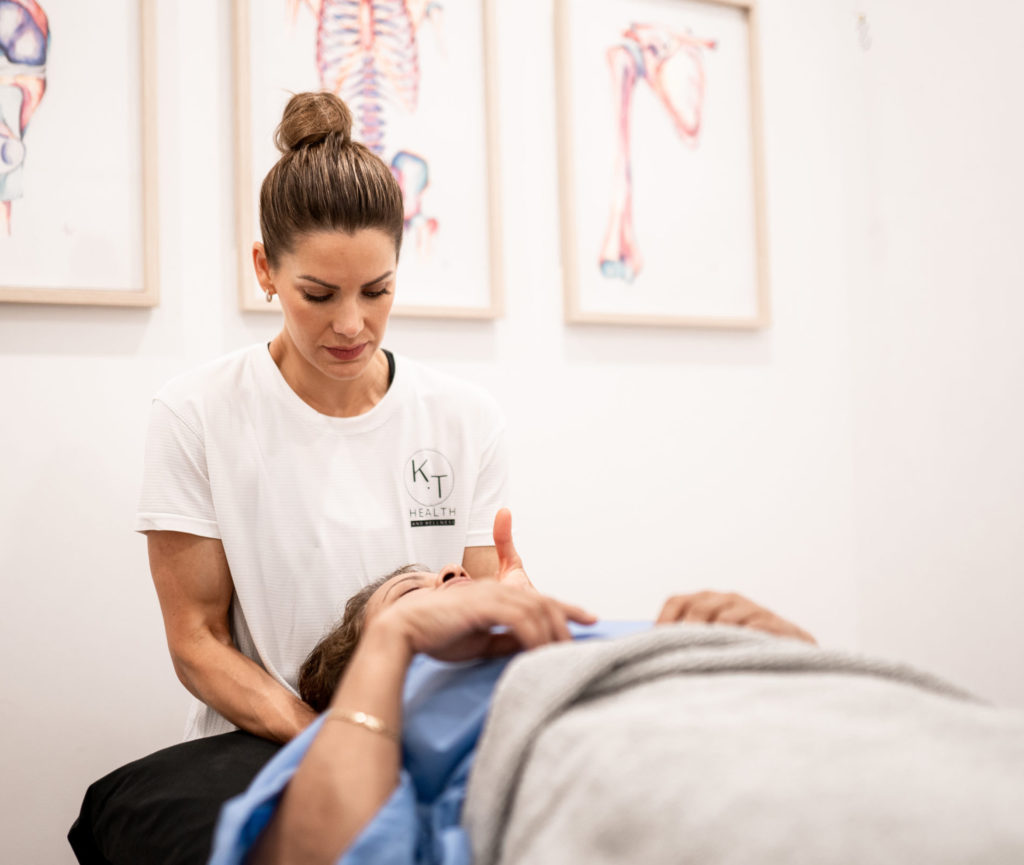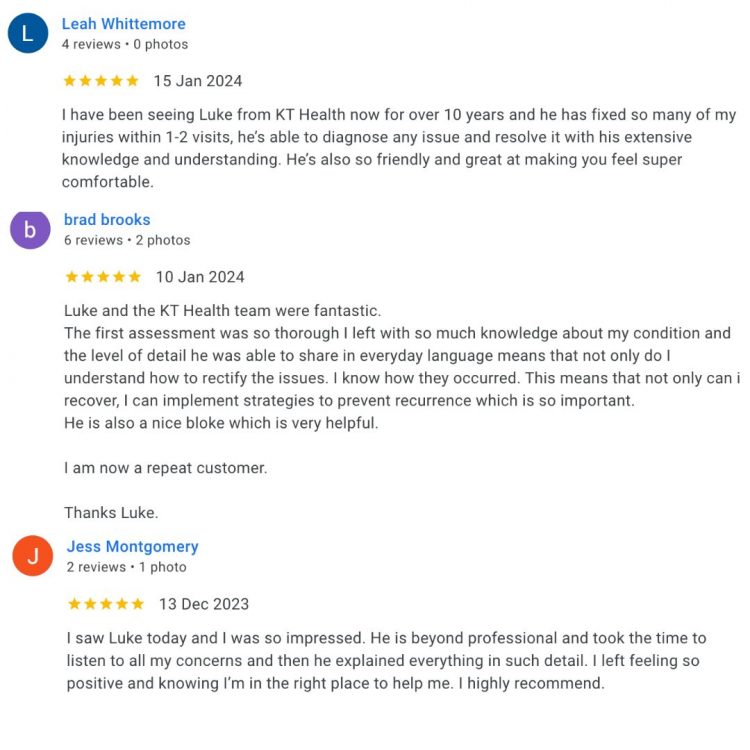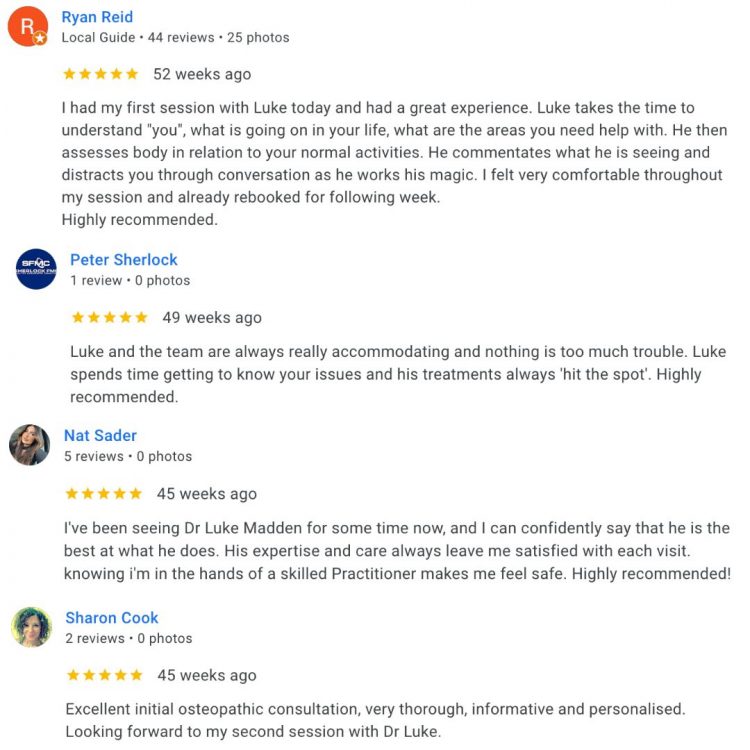A sprained finger is when the ligaments in a finger are overstretched or torn, usually from forceful bending or impact. Ligaments are strong bands of tissue that connect bones and stabilise joints, so when they’re injured, it can lead to pain, swelling, and difficulty moving the finger.
An analogy…
Think of a ligament like the ropes on a tent pole, if one is overstretched or frayed, the pole can wobble or feel unstable. A sprained finger works the same way: if the ligament is damaged, the finger loses its usual strength and control.
What are other names that a sprained finger can be called?
Finger Sprain
What causes a sprained finger?
A sprain happens when a finger joint is forced beyond its normal range of motion, often through jamming, bending sideways, or hyperextending. This can stretch or tear the ligaments that hold the joint in place, most commonly at the proximal interphalangeal (PIP) or metacarpophalangeal (MCP) joints.
What are the signs and symptoms of a sprained finger?
- Pain in the affected finger joint
- Swelling and bruising around the joint
- Difficulty bending, straightening, or gripping
- Tenderness when pressing on the joint
- A feeling of weakness or instability
- In more severe cases, the joint may look slightly misaligned
What tests are used to diagnose a sprained finger?
Physical examination: the practitioner checks swelling, joint movement, and pain response
Palpation: to assess ligament tenderness and joint stability
Stress tests: gently applying pressure to see if the joint moves too much (indicating a tear)
How long does a sprained finger take to heal?
Mild (Grade 1) sprains may heal in 1 to 2 weeks with rest and protection. Moderate (Grade 2) sprains, especially those involving partial ligament tearing, typically take around 3 to 6 weeks to recover. Severe (Grade 3) sprains that involve full ligament tears or joint instability can take 6 to 8 weeks or longer to heal and may require splinting or, in some cases, surgery.
How does a sprained finger happen?
- Jamming the finger on a ball, surface, or opponent
- Falls where the hand is used to break the impact
- Hyperextension or twisting of the finger during activity
- Repetitive finger strain in manual work, climbing, or contact sports
- Previous finger injuries that make the joint more vulnerable
What treatment can help a sprained finger?
- Rest and activity modification to avoid further strain
- Ice and compression to reduce swelling and pain
- Buddy taping to support the sprained finger by strapping it to a neighbouring finger
- Splinting may be used in moderate to severe sprains
- Anti-inflammatory medication if needed
- Rehabilitation exercises to restore motion and strength once pain reduces
What exercises or stretches can I do for a sprained finger?
- Finger range of motion drills
- Tendon gliding exercises
- Grip strengthening using therapy putty or soft balls
- Fine motor control exercises
What products can help with a sprained finger?






